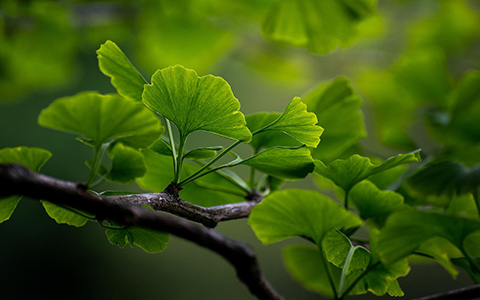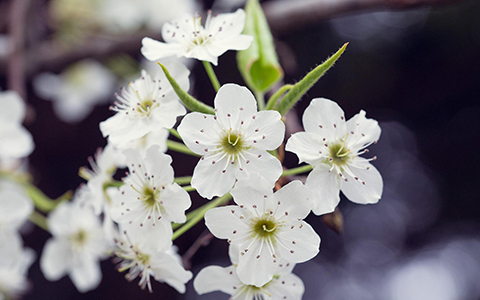
Avoid planting trees that produce awful aromas. Knowing which trees smell bad will help you cultivate a beautiful landscape without the horrific wafting odors of urine or excrement.
72tree.com gathered the following information about five tree species that emit a repugnant smell through their bark, foliage, or fruit.

Bradford Pear is a variety of pear trees native to Korea and China called Pyrus calleryana. This species was introduced into western horticulture in 1908 and has been causing a stink ever since.
Pyrus calleryana is one of the first tree species to flower in the spring and typically one of the last trees to have colorful foliage in the fall. The tree’s white blossoms are about a half-inch in diameter and fill its canopy. Bradford pear fruit is small, round, and hard until softening after the first frost.
When Bradford pear trees are in bloom, they will unleash a canopy of beautiful white blooms but will also emit a stench that’s often likened to rotting fish.
Bradford pear trees are hardy to zones 5 through 9, and at maturity, this tree species can reach heights of 40 feet and a spread of 20 to 30 feet.

Closely related to the Bradford pear, the Callery pear is a small to medium-sized tree with a compact, symmetrical, or columnar shape that spreads to become oval with maturity. Many cultivars exist with slightly different characteristics, but all of them contribute to the species’ invasiveness.
If you see this tree in bloom, you may want to keep your distance (or take an out-of-town vacation). The aroma produced by these pretty Callery pear flowers have been compared to the smell of human male semen and vomit.
Callery pear trees are hardy to zones 4 through 8, and at maturity, this tree species can reach heights of 40 feet and a spread of 20 to 30 feet.

This species of spruce is native to North America, and its timber is principally used in general construction. Its uses also include timber for cabin construction, musical instruments, paddles, furniture, cabinets, pallets, boxes, and food containers. Picea glauca is also commonly used as a Christmas tree.
The tree’s needles are a stunning bluish-green color but give off a horrid aroma when the needles are crushed. Other names the tree goes by include cat spruce and skunk spruce due to the foul odor.
White spruce trees are hardy to zones 2 through 6 and, at maturity, will often reach 60 feet in height and 10 to 20 feet in diameter.

Known as one of the most distinct and beautiful of all deciduous trees, the ginkgo certainly stands out. With its unique, fan-shaped leaves that turn a stunning yellow in the fall, it is a tree that can tolerate many unfavorable urban conditions, including heat, air pollution, and salt. This tree also takes root easily.
For all of its majestic traits, there is one that stands out – its hideous odor. When the females of the species drop their leaves and fleshy fruit, when crushed by vehicles or pedestrians release a distinct stench that has been likened to rotten butter, vomit, dirty gym socks, or dog excrement.
Ginkgo trees are hardy to zones 4 through 9 and, at maturity, will often reach 25 to 50 feet in height and 25 to 35 feet in diameter.

This towering tree species is often identified by its smooth and brownish-green bark when it is young, eventually becoming light brown to gray in its maturity, resembling cantaloupe skin. This tree’s scientific name, Ailanthus (sky-tree), and its common name, tree-of-heaven, both refer to its ability to quickly grow towards the sky.
Even with such a celestial name, you cannot get by its terrible smell. The leaves of male trees smell like rancid peanut butter or well-worn and musty gym socks.
Tree of Heaven is hardy to zones 4 through 8 and, at maturity, will often reach 60 to 70 feet in height and 80 feet in spread.
In this article, you discovered several tree species that most people deeply regret ever having planted on their property due to the horrible odors that they emit.
Knowing which tree species smell bad will help you avoid embarrassing moments when trying to explain the foul stench in the air.
Planting trees that smell bad will leave you with an unenjoyable landscape riddled with off-putting aromas.
Sources:
naturewalk.yale.edu/trees/rosaceae/pyrus-calleryana/callery-pear-tree-33
extension.umd.edu/resource/bradford-pear
realchristmastrees.org/education/tree-varieties/white-spruce/
landscapeplants.oregonstate.edu/plants/ginkgo-biloba
extension.psu.edu/tree-of-heaven